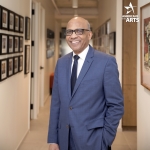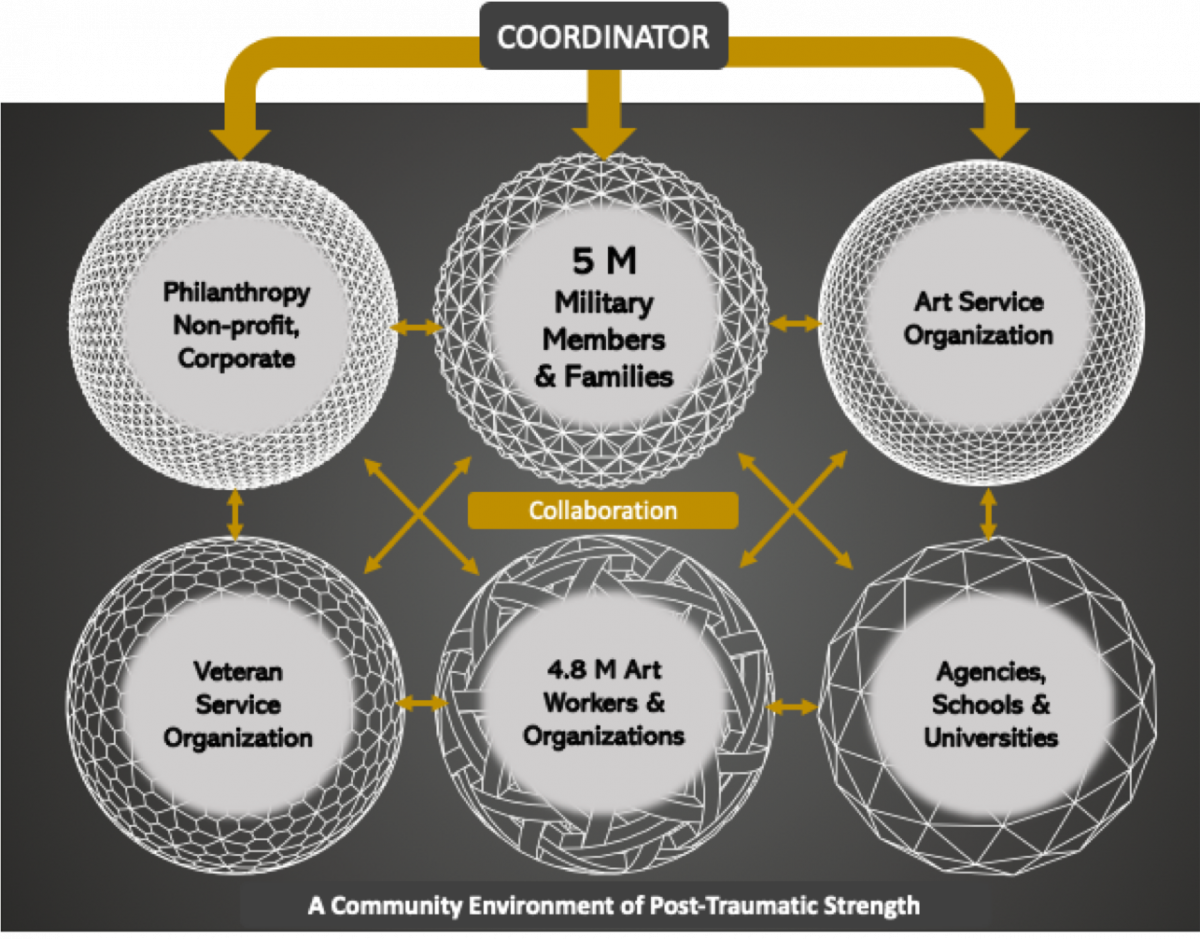Community Boots on the Ground: Building Healing Arts and Military Community Relationships
Posted by Nov 09, 2018

Mr. Nolen V. Bivens
Putting “boots on the ground” is an expression the military often uses to communicate its intention to deploy the armed services to defend U.S. interests. This Veterans Day, I join a grateful nation in thanking all veterans who have put a face to those “boots on the ground” by serving in the U.S. Armed Forces.
For several years now, I’ve had the great honor to work with Americans for the Arts and its National Initiative for Arts & Health in the Military to convene and advocate the value of the arts in health and healing nationwide, particularly its significance to the military community. Through this transforming experience, I’ve seen thousands of individuals—boots on the ground—who are building healing arts and military networks, which offer civilian and military community members greater opportunities to regain health and wellbeing and to build resiliency in response to the reality of increasing trauma occurring within our communities.
How Did We Get Here?
Four factors are converging to empower the creation of what I’ve come to term organic Arts and Military Community (ArtsMilCOM) ecosystems.

First, the long-lasting arts and military connection is very much alive. For example, the visual arts’ venerable contribution to the depiction of military history is enduring.
Second, the citizen’s and soldier’s respective experience of domestic and global terrorism has left each in states of ever-increasing trauma—creating the local community’s greatest crisis and opportunity.
Thirdly, in the wake of decades-long combat deployments, military services are taking aggressive action to mitigate stress and increase the force’s resilience.
Fourth, the goodwill between citizens and soldiers is the highest it’s ever been. Today, the military remains America’s most trusted institution, and the phrase “Thank you for your service” is now a genuine exchange of appreciation.
A Way Ahead
The convergence of these four factors defines the community’s need, a new moment offered, and the movement indispensable to addressing it.
Through the arts, troops, their families and civilian community members are discovering ways to successfully deal with life’s traumatic consequences on their own terms—a dynamic which is very important within a military culture that takes pride in selfless service and independence.
A ubiquitous presence within the community ecosystem uniquely positions the arts to lead the movement to create healing networks and non-stigmatized environments that both afford respect and foster community-wide resilience and growth for individuals facing the invisible wounds of war.
Guided by an overall coordinator, local communities are building these ArtsMilCOMs—healing arts and military networks. The country’s 5 million military service members and families; 4.8 million arts workers; local, state, regional, and national arts agencies; arts service organizations; individual artists; veteran networks; military family support networks; government departments and agencies; businesses and corporations; philanthropic organizations; and academic universities are all collaborating to develop and deliver relevant creative, educational, and/or therapeutic arts engagements that individuals can subscribe to via professionally coordinated arts, health, and wellness pathways.
Building successful, organic ArtsMilCOM ecosystems requires conducting inventories of community assets and identifying existing arts-military collaborations, all which enable:
- Open system learning
- Local mentoring and coaching
- Connecting to capital
- Creating connections and opportunities
- Engaging local resources
- Communicating with the community
- Tracking and measuring performance
Today, there are boots on the ground throughout the country building ArtsMilCOM ecosystems that give control back to civilians as well as military service members and their families, with the goal of achieving what I’ve termed post traumatic strength (PTS).

I choose post traumatic strength for three reasons: one, to accent the presence of the personal quality of strength innately present in all veterans and family members; two, communicate that strength is the intended goal for both the individual and community in this work; and, three, to diminish the “helpless” undertone unconsciously accompanying the “post-traumatic stress disorder” expression.
The “boots on the ground” efforts I’ve observed and been inspired by illustrate more than just having a presence in the community. They express an “all hands on,” personal, and integrated approach for making a lasting impact on community total health, wellness and resiliency, and underpinning future unanimity between citizens and soldiers.
On this Veterans Day, I say to them and all veterans around the globe, “Thank you for your community service.”





